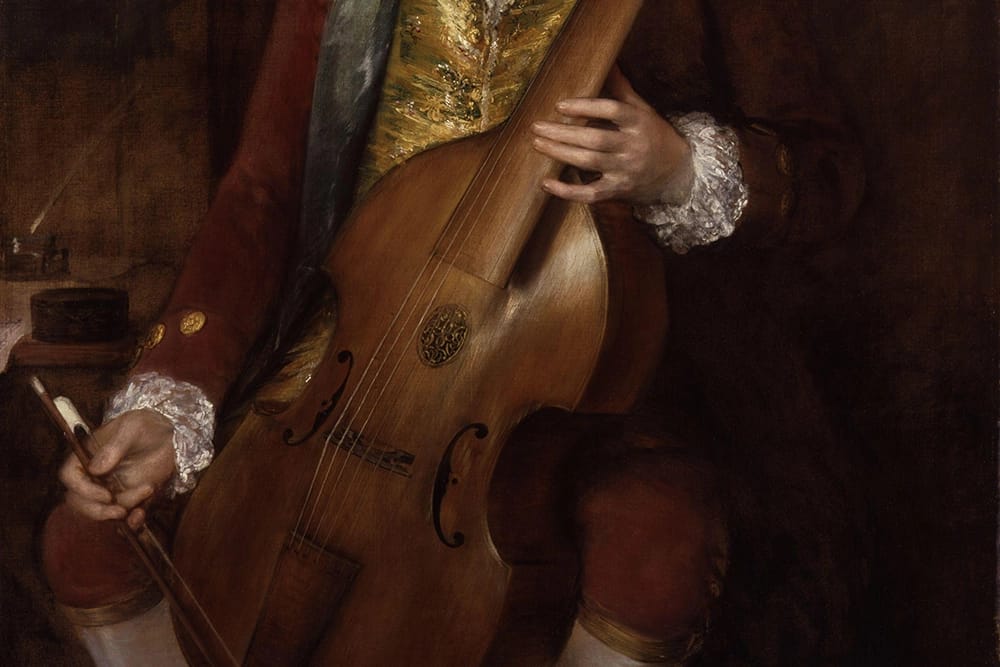
KUSC’s Alan Chapman has a lot to say about music, but can he say it in 60 seconds? That’s the Chapman Challenge. We ask a question and Alan has a minute to answer it.
Today’s question is from Barbara in Long Beach who wants to know “What is the difference between a viola and a viola da gamba?”
Hit play below to listen to this week’s Chapman Challenge on Arts Alive.
These days the word viola refers to that instrument you find in orchestras and string quartets that looks like a violin, is held under the chin like a violin, but is a bit bigger and lower in pitch than a violin.
This is a viola da gamba:
Don’t try to hold a viola da gamba under your chin. It’s the predecessor of the cello and it’s of comparable size. The name indicates where you hold it. “Gamba” is the Italian word for leg and it’s held between the legs like a cello.
So let me tell you the difference between a viola da gamba and a cello. The cello has four strings; the gamba has six (or sometimes seven). And unlike a cello, a viola da gamba has frets like a guitar, and that makes it easier to play chords on the gamba.
And, by the way, one of the celebrated gamba virtuosos was Johann Christian Bach’s co-impresario in London, Carl Friedrich Abel.

Karl Friedrich Abel by Thomas Gainsborough
That’s today’s Chapman Challenge. Is there a question you’d like to have answered in 60 seconds? Send it to us at [email protected].







